|
home | what's new | other sites | contact | about |
||
|
Word Gems exploring self-realization, sacred personhood, and full humanity
Dr. Rupert Sheldrake
from https://besharamagazine.org/science-technology/sheldrake-memory-habits-and-wholeness/ Biologist Rupert Sheldrake challenges the dogmas of conventional science, and explains how recent research supports his alternative theory of morphic resonance 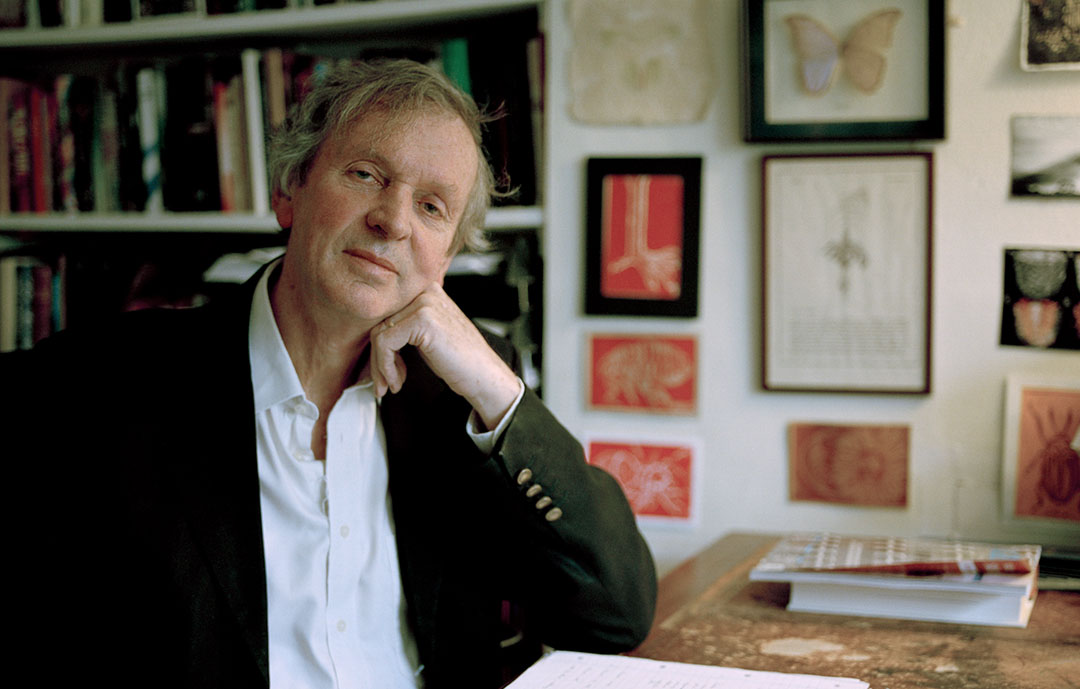
Jane: In your book The Science Delusion, and in the TED talk which has been so controversial (see video to right or below) you begin by proposing that science has two aspects now: on the one hand it is a way of exploring the truth, and on the other it is a belief system. Can you say something about this? Rupert: Well, as a scientist, I am totally in favour of science as a means of exploration. This is what I do; I spend most of my time doing research, mostly experimental. I am completely committed to science as a form of investigation, which is based on forming hypotheses, testing them and giving a critical discussion of results. What I am not in favour of is science as a kind of belief system, which has become increasingly dogmatic, and which has now become the orthodoxy of the educated classes in Western countries. Jane: How would you characterise this? Rupert: Nature is mechanical; God does not exist; there is no such thing as a spiritual world; the mind is nothing but the brain; evolution is pointless and purposeless; there is no life after death, etc. In other words, it has become a form of justification for a particular kind of atheism, and for most people, science backs up what they, or their family before them, have chosen as an atheist stance. Omar: Given recent discoveries in science, particularly in particle physics with the results coming out of the accelerator at CERN and such like, do you not think that people must be changing their minds about some of these beliefs? Rupert: Well, I think most people believe these dogmas without really looking at the evidence. My argument in The Science Delusion is that in every one of the ten areas I discuss, science itself has gone beyond the dogmas. But most people continue to believe them anyway. Even if you are a practicing scientist, most sciences are so specialised now that people studying, say cosmology, don’t know very much about what is happening in solid state or low temperature physics, let alone in biology. So they are very reluctant to comment even on adjacent areas to their own field because they are not experts. Omar: But what about the evidence from quantum mechanics, which shows us, without doubt, that the behaviour of particles depends upon the state of the observer? Rupert: I actually think that the importance of the observer in quantum physics is exaggerated. It is not just in quantum theory that this is the case but, as the philosopher Schopenhauer pointed out in the 19th century, all observations require observers. There is no such thing as an observation without an observer. But most scientists seem to assume that there is, and it is only in quantum theory that they have woken up to the fact. 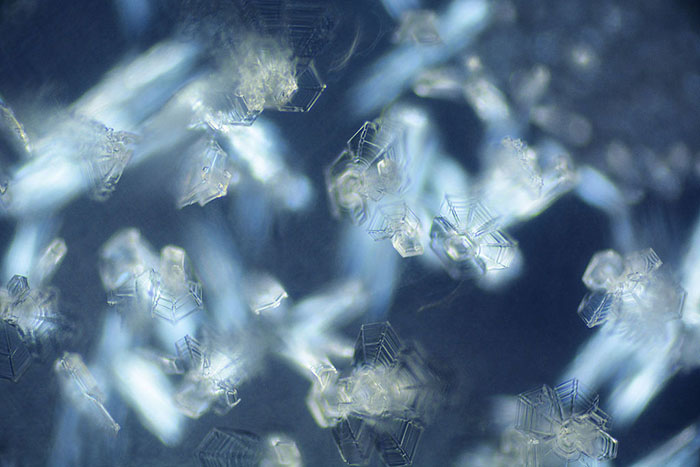 Ice crystals. One of the predictions of Sheldrake’s morphic resonance theory is that crystals form more easily over time, and this is supported by experimental evidence.[3] Memory and the Evolving Universe. Rupert: The conventional idea is that there are eternal laws, but nature has no memory. So the way that anything knows how to do what it does – such as a spider making its web, a solution crystallising into salt, the formation of water molecules – is nothing to do with evolution or anything that has happened in the past, but it is determined by laws of nature. Other worldviews have a different understanding: in Hinduism and Buddhism, for instance, there is a kind of memory in nature; also in some Islamic philosophies too, such as that of al-Ghazali [/]. These laws are understood to be outside of nature. In early scientific thought they were eternal truths in the mind of God, but of course God is no longer there for modern scientists. So, since 1966, which was when the Big Bang Theory of creation was proposed, we have seen the universe as evolving and expanding rather than eternal and static, and these laws have become a kind of hangover from an old worldview which is no longer necessary. And they are leading modern cosmologists into a lot of difficulties. This is because it is increasingly clear that the laws and constants of the universe are exactly right for us human beings to exist in it, and this raises the question – ‘why?’ Jane: You are referring to what is called ‘The Anthropic Principle’ [/] ? Rupert: Yes, the fact that it looks as if the whole universe is designed to be just right for us human beings. There are basically only two possible answers to this if we want to retain the concept of immutable laws. One is that there is some kind of deity who is manipulating the laws and constants from the outside, so to speak. But this is not an acceptable theory for most scientists. The alternative is that we are living in a multiverse, that is, there are lots of universes and we just happen to be living in the one that is exactly right for us. But all the others actually exist. However, another way of looking at all this is to say that everything is evolving, even the laws of nature; and that nature has memory, which means that things behave as they do because they remember what they did in the past. Morphic resonance is really a theory of habit. It explains how things continue in forms or patterns which are similar to those that they, or other systems like them, have followed before. So this means that each species, and each kind of self-organising system – because we are talking about atoms and molecules here as well as biological species – has a collective memory, similar to the archetypal memory proposed by the psychologist C.G. Jung. And memory is cumulative: the more often particular patterns of activity are repeated, the more habitual they tend to become. Jane: This is a holistic theory, so it would imply that when we are thinking about the evolution of the universe, things are moving not just into higher degrees of organisation but higher degrees of wholeness. Rupert: Yes. Each kind of pattern has a kind of holistic quality to it: you don’t get half a cat, you get a whole cat; you don’t get half an oak tree, you get a whole one. Everything in nature has different levels of wholeness, just as in bodies there is the whole body and the different parts, such as eyes and ears and so on, and then there are tissues, cells, organelles, then molecules, then atoms, etc. So this is a view of nature as being made up of wholes at many different levels, each of which has it own habits. And the entire universe has to be a whole. That is one of the things the scientific worldview has taken on right from the beginning. If you think about Newton’s law of gravitation, it says that every particle of matter acts upon every other particle of matter in the entire universe, and in accordance with the same mathematical relationship. Right at the beginning of mechanistic science, this is a statement of universal interconnectedness. Omar: Just using different terms. Rupert: Yes. Newton himself, of course, was far from being an atheist or mechanistic reductionist. In fact, he was a very religious man who was influenced by neo-Platonic philosophy and alchemy. 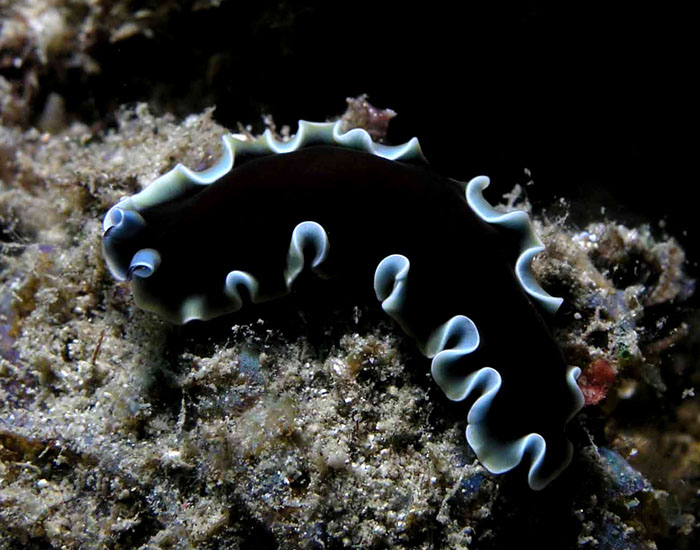 The Black-frilled Flatworm. Memory and the Brain. Rupert: One of the ten dogmas that I tackle in the The Science Delusion is the notion that memories are stored in brains. Most people take this for granted because they say: where else would they be? But as memory theorists themselves point out, memory has three aspects: there is the laying down of memories, the storage of memories and the retrieval of memories. Now the main reason that people think that memories are just in the brain is because brain damage – such as strokes, Alzheimer’s disease, etc. – can lead to loss of memory. But what could be happening is that it is just the retrieval system which is damaged. And in fact, we find that people who have strokes or concussion or other kinds of brain damage often recover from them after a time. And surprisingly, in Alzheimer’s, there is a remarkable phenomenon which is only recently starting to be investigated, called ‘terminal lucidity’ [/]. There are a lot of case studies now when right at the end of their lives, people’s memories come back and they have a period of extraordinary lucidity in the days or hours shortly before death. This shows that the disease has not destroyed the memories themselves but just the ability to retrieve them. Omar: You also mention examples where memory survives even when the brain completely dissolves. Rupert: There are a whole series of studies on the survival of memory in situations when it really should not happen at all. When caterpillars turn into butterflies, for instance, in the pupa the whole body of the caterpillar sort of melts down, including the nervous system. You can train caterpillars to prefer certain kinds of food – new ones which their ancestors might never have come across – and then, when the butterfly appears, we find that they seek out these particular food plants to lay eggs for the next generation. So the memory of that learning survives the meltdown of the entire nervous system (for a similar experiment, click here [/]). There are several other examples of this kind of thing; for instance, flat worms. (planaria). These don’t have a very big brain, but what they have is in their head, and they are interesting because they have an extraordinary regenerative capacity. They can be trained to recognise certain features of their environment, so in a recent experiment [/], they were trained in this way, and then their heads were cut off. And it was found that when they had regrown a head, they still remembered what they had learned before. So this shows clearly that their memory was not in the brain in the first place. Omar: In the book, you also talk about memory traces in the brain and how scientists are failing to find them. Rupert: Yes. There has also been some very detailed research in the last ten years using a technique called optogenetics [/], whereby they engineer mice so that their brain cells glow green when they are active. In this way they can see which cells are involved when they memorise something; those cells are called ‘memory traces’ and they are found in the hippocampus. But it turns out that after a few days, whether these memory traces are active or not, the mice still remember. So again, the location of memory has proved elusive despite a huge amount of research involving these very expensive techniques. What all this shows is that when memories are laid down or when they are retrieved, there are measurable levels of activity in the brain. What it does not show is where the memories are in between times. They simply vanish. And I propose that the reason we cannot find them is because they are simply not there. The brain is not working as a video recorder, storing all these impressions inside it, but more like a TV set. Jane: So where are these memories stored? Are you positing a kind of spirit/matter configuration in a different form? Some realm – a non-material realm – where these memories are preserved? Rupert: I think ‘where’ is the wrong question. Memories reside in time not in space. If you ask where they are stored, then you might be thinking that they are in the akashic record or some sort of cosmic memory bank or cloud storage. But there is nothing in the experience of memory that tells us that it is stored in a place. I am not the only person to have these ideas. Wittgenstein was also very sceptical about the trace theory of memory, and in his book Zettel,[4] he says: I meet someone I met before, I recognise them and know who they are. But this experience does not tell me that in the meantime these memories have been stored in my brain. All I know is the experience of recognition. The whole idea of morphic resonance is that there is a kind of connection across time. Anything in the past that is similar to anything in the present will directly resonate with it. The past is potentially present everywhere, and you don’t have to say that something ten years ago is further away than something one year ago. Time is very different from space, although we often think of it in spatial terms: we talk about the distant future, the near past, etc., and in Cartesian graphs time is often one of the axes, so we get a visual image of it. But this is just a way of representation, because our minds primarily work spatially and so we use spatial metaphors. But memory does not work this way: we don’t have a sense of distance in memory and, in fact, it’s the opposite. In Alzheimer’s, people lose their memory of most recent things first. If time was like space, it should be the other way round. So this whole way of thinking about memory in terms of space may be wrong. 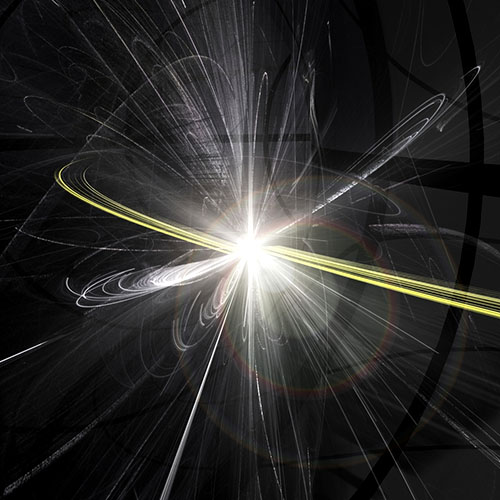 Particle collision in the Large Hadron Collider in Geneva, Switzerland. Continual Creation. Rupert: Absolutely. Within Western philosophy, these ideas are taken furthest by the school of Alfred North Whitehead, and are referred to as ‘process thought’ [/]. Whitehead said that what quantum mechanics shows is that matter is not ‘stuff’ – atoms are not like little billiard balls – but rather, what we are talking about are patterns of vibration. And if something is a vibration, then it is extended in time, because it takes time to vibrate. And if it is extended in time, it has a past pole and a future pole. Therefore, everything is a process or an event; nothing is an enduring substance, so that it could be called ‘dumb matter’ that just stays where it is. Jane: One of the phrases I remember from Whitehead is that, in this process of constant recreation, “each form takes its form from the previous one”. So this is where memory comes in? Rupert: Yes, because each electron, just to go on existing, has, as it were, to remember itself as it existed in the past. One of Whitehead’s words is ‘prehension’, which means ‘grasping’. I call it ‘morphic resonance’; self-resonance is what underlies the being of everything, otherwise it would not have an ongoing existence. You’ve mentioned Islamic philosophy, but these ideas also formed a very important school in medieval Christian theology. The main interpretations of the Holy Trinity in the Middle Ages see God the Father as the ground of all being, and as such, He sustains the universe from moment to moment. God does not create a universe, press a button and set it running as an autonomous being that continues without further intervention. This idea only appears at the end of Medieval philosophy. Omar: Who are you thinking of within the tradition? Rupert: The idea of God as the ground of all being is actually expressed beautifully by the contemporary American theologian John Bentley Hart in one of my favourite books, The Experience of God: Being, Consciousness, Bliss.[5] But the idea goes back even to St Augustine, for whom one way of understanding the Holy Trinity is what is called ‘the psychological model’. In this, God the Father is the ground of being in the sense of memory because that allows all things to persist and continue. God the Son is knowledge, that which is known. But it can only be known by a knower, so the ground of being, God the Father, is the knower, and God the Son is the known. God the Holy Spirit is the love, joy, connection, spirit, between them. St Augustine’s understanding of the Holy Trinity builds memory into God as the ground of being. And this is one of the most orthodox views of the Trinity. When people say that the Trinity is three gods, it is not at all. It is rather about the internal psychology of the divine.  A great tit and a blue tit drinking cream from milk bottles. Photograph: : Roger Wilmshurst [/] / Morphic Fields. Rupert: There are two aspects to this. If we are talking about our conscious subjective experience, which is how we remember or feel things, we have to understand that what we remember is often what the memory theorists call ‘constructed experience’; that is, we remember things as they affect us, which is why witnesses to incidents such as traffic accidents often give very different versions of events. This kind of memory can be very individual. But the other aspect is the way that our behaviour and our habits are shared. The thing about habits is that they are largely unconscious; if I learn to ride a bicycle, for example, I may be conscious of the experience when I first learn it but after a while it becomes a habit which I don’t think about very much. But nevertheless, the way I ride a bicycle will affect others and make it easier for them. And there is quite a lot of evidence now, apart from the blue tits – which of course is a redundant example now as we no longer have milk bottles or milk with cream on the top – that this is the case. Jane: In The Science Delusion you bring the example of the Flynn Effect [/], which shows that since IQ tests were introduced in 1920s, scores have consistently increased, indicating that people have found them easier and easier to do.[6] Rupert: Yes, people are struggling to explain the Flynn Effect, and want to put it down to improved diet or better early education, or whatever. But morphic resonance provides a simpler explanation. 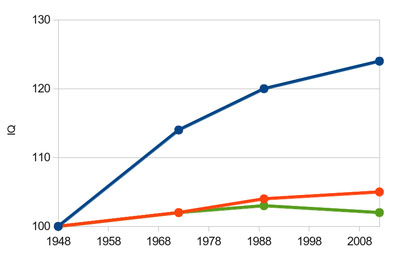 The Flynn Effect, showing the rise in average IQ over time in three different tasks; blue = similarities; red = vocabulary: green = arithmetic. Source: Pedros.lol via Wikimedia Commons. For details of academic research, see [6] Omar: But what about memories that remain as an emotional experience, or an emotional reaction to an event? Rupert: Well, some recent experiments with mice have suggested that these might be shared. As you probably know, since the year 2000 the taboo on the transmission of acquired characteristics – what used to be called Lamarkian inheritance – has been lifted. It has now been rebranded as epigenetic inheritance, and is currently a very active field of research. In one recent experiment they taught mice – male mice – to be afraid of the smell of a chemical called acetophenone by giving them an electric shock when they were exposed to it. They then took sperm from these mice and artificially inseminated females, who therefore never met the males. Then they looked at the resulting children and the grandchildren and discovered that they too, when they smelt acetophenone, froze with fear.[7] (For more details, click here [/].) This experiment was published in Nature, so it is a mainstream piece of research. What researchers propose is that this effect is transmitted through some kind of chemical modification and genetic effects in the sperm. But I would propose that some form of morphic resonance is involved. Jane: The real test of that hypothesis would be to find out whether mice that were not genetically related to the first batch of males also became afraid. Rupert: Well, that has actually been found to be the case in an experiment that I conducted myself with a batch of chicks whom I taught to be afraid of a yellow light. When other chicks of the same breed were brought into that environment, they too showed fear.[8] (Click here [/] for details.) Jane: You say that these effects are transmitted through time rather than space. But is there no attenuation at all over distance; does it make a difference if the chicks are in Australia, for example? Rupert: What matters above all is similarity. If the chicks in Australia were in a very different environment, surrounded by eucalyptus trees and listening to indigenous music, etc., it might make a difference. But if they were in standard laboratory conditions, probably not. Similarity is the key, and this is probably why the effect is so strong in the fear experiment, because the mice share a genetic constitution. The strongest morphic resonance effects amongst humans are found between identical twins, who are genetically the same. As you probably know, there are lots of studies now that show that even if twins are separated at birth, they develop in very similar ways. The standard interpretation of these cases is that they show that inheritance is all in the genes, and in fact the main evidence for genetic inheritance comes from twin studies. Omar: When we are talking about similarity, we are talking about the similarity of receptors – that is, they are the same species, or the same family – not of the memories themselves? Rupert: Yes. And in using the analogy of the receptors and televisions, it is important to say that we are not talking about us having something like an antenna somewhere in our brains. We are talking about the whole organism. A cat is similar to another cat: the pattern of interaction in one molecule of a compound is similar to that in another. And we are also only talking about self-organising systems – atoms, molecules, animals, plants, microbes, solar systems, galaxies, the earth, etc. Things like tables, chairs, computers are not self-organising. Machines do not organise themselves, and they are made in factories, rather than growing as plants and animals do. This is why the machine metaphor of the universe is really the worst one, because the universe is an organic, self-organising whole, whereas machines are put together from parts. Jane: So you would never expect to be under threat from an android, or from an AI creation developing consciousness? Rupert: No, I am not afraid of that. Because I think people have completely misunderstood the nature of consciousness and mind. These AI systems can certainly be trained to do facial recognition, or drive cars, play chess, etc. But the idea that they can become conscious and creative is just simply a fantasy. 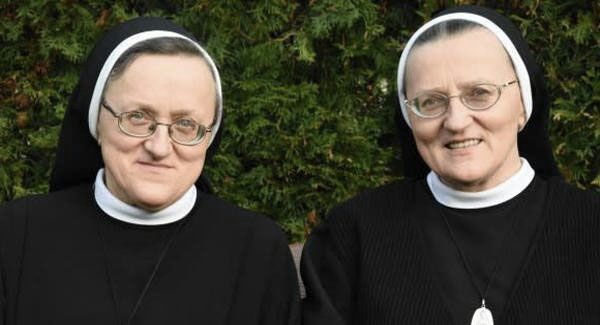 Twins who were brought up separately end up in the same convent. Click here [/] for the full story. Memory and Inheritance. Rupert: In the 1980s, when I first put my ideas forward – A New Science of Life came out in 1981 – people thought that all inheritance would soon be explained through genes. That’s why the genome projects got so much money: tens of millions of dollars were invested in them because it was thought that if we could read ‘the book of life’, then we could explain everything about the organism. But that is not what happened. In the human genome project, for instance, they have now sequenced tens of thousands of people’s genomes, but they cannot even explain simple things like height. You can predict this to about 80% accuracy by measuring the heights of the parents with a tape measure, but the figure is only about 30% if you just have the genetic information. There is a term now for this, and it is called ‘the missing heritability problem’. What this expresses is the discovery that a large amount of inheritance is simply not there in the genes. This has baffled the genetic scientists. Unfortunately, their response is that they want to do even more sequencing and computer analysis, and look for even more variants. But they have been saying this for ten years now, and even with their best efforts, with height they have got the figure up from 5% to 30%. That still leaves 70% unexplained. Omar: So this is like the missing memory traces? Rupert: Yes. I think that we will eventually come to understand that the development of these traits through the generations has far more to do with morphic fields. One of the tragedies of our current science is the huge amount of resources – both financial and human – that is poured into research which I believe will never deliver results. This is not just in genetics but also in neuroscience. And this is the power of dogma: despite the fact that there is very little evidence that these projects will succeed, we continue to invest money in them. Jane: The Science Delusion has been an enormously successful book. This must be an encouraging sign that there are many people who are now prepared to question some of these assumptions. Rupert: Yes. In fact, I am currently working on a new edition, completely updating it. This is largely because since the third edition was published in 2009 things have moved on – and very much in the directions that I predicted. The missing inheritance problem has got much worse; and the failure to find memory traces continues. There was a big flurry of excitement in 2013–14 when they thought that they had found some, but this turned out to be false and since then their hopes have been dashed time and time again. So the book will include a lot of recent research which makes the argument for my case even stronger.
|
||
|
|
